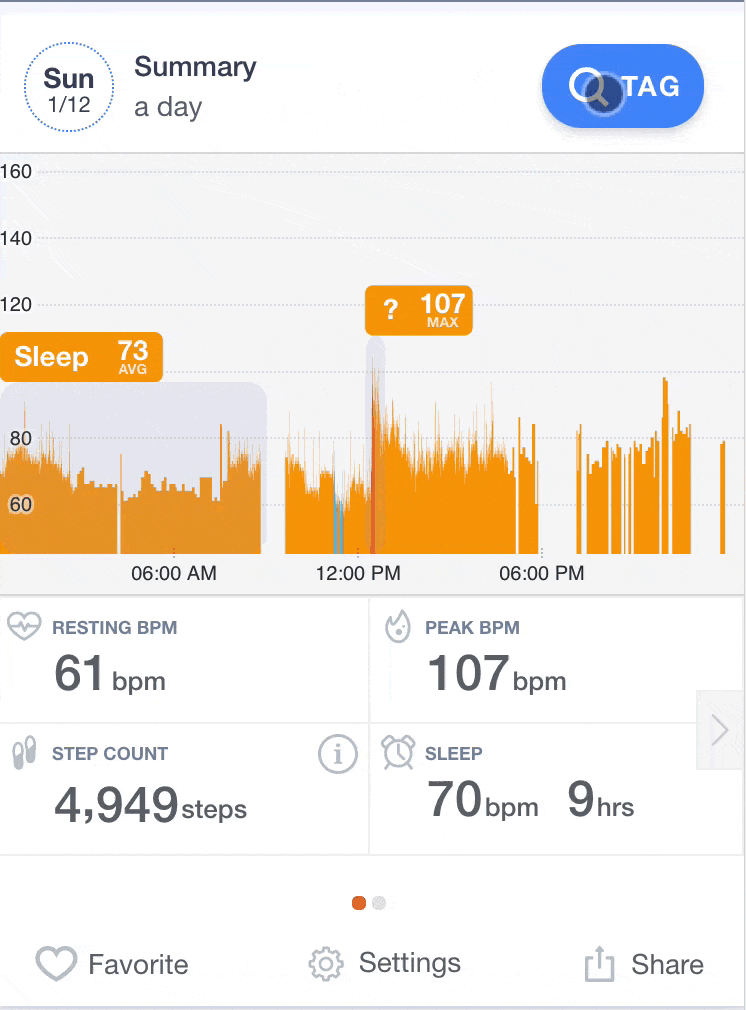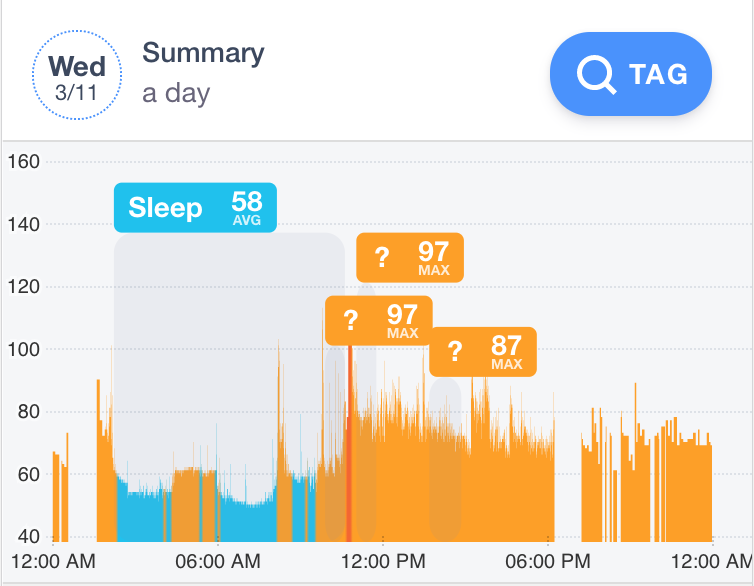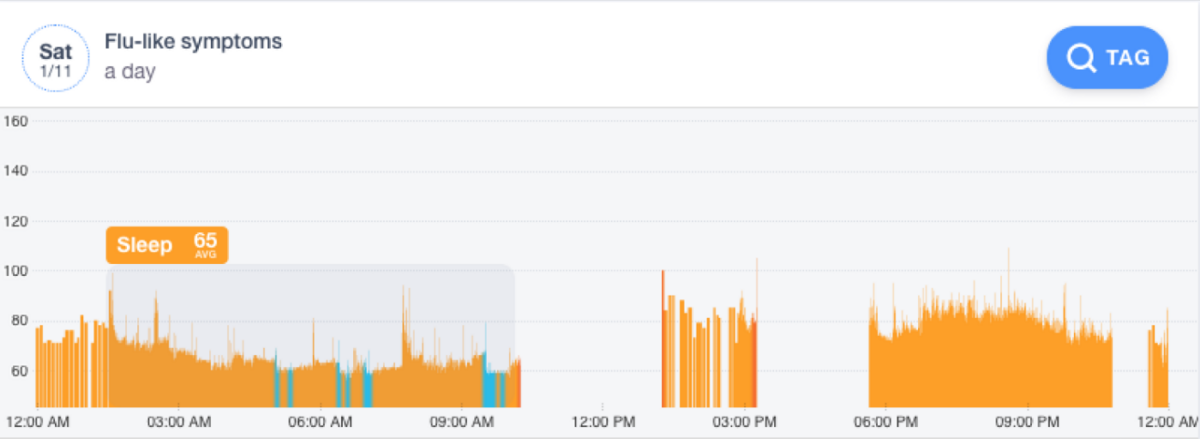
A front-row seat to your body’s fight against infection
One often overlooked sign of the flu is an elevated heart rate. Wearables like Apple Watch, Fitbit, and Garmin have let millions of people continuously track their heart rate and activity. Cardiogram helps you visualize this data in a way where you can see how illnesses like the flu affect your heart rate.
Here’s Cardiogram data from our co-founder, Johnson Hsieh, when he caught the flu in January vs. when he’s healthy. You’ll notice how much higher his average heart rate during sleep (sleeping BPM) is when he had symptoms like fever, body aches, and coughing.
Sleeping BPM, resting BPM (average heart rate while awake but without steps or activity), and sleep duration all tend to increase during illness. Here’s how Johnson’s weekly stats changed:

Your heart rate reflects inflammatory responses
Flu symptoms reflect your body’s fight against the infection. When a virus like influenza is circulating through your body, your immune cells defend by releasing small proteins called histamines [1]. This causes inflammation and symptoms like body aches, coughing, sneezing, and fever.
During inflammation, blood vessels expand and become more permeable. This allows white blood cells and proteins from your blood to move into the damaged tissues to help fight the infection. When your blood vessels expand, signals are sent to your brain to increase your heart rate and pump more blood to the inflamed regions [2]. Your heart rate increases while you’re awake and while you sleep, and generally continues until your symptoms improve. Wearables track this elevated rate, which is what you can see in your Cardiogram data.
Your heart rate reflects inflammatory responses
Sustained elevations in heart rate during sleep and at rest can also be caused by medical conditions unrelated to the flu or by routine things like stress. But when you go to the doctor, it can be difficult to remember your symptoms and organize them with all of the data you’ve tracked. To better understand your own data and have more informed conversations with your doctor, you can use Cardiogram to tag any section of your heart rate with more detail.
When you see an unexpected change in your heart rate, add a tag to note your symptoms (e.g. fever, body aches) or other potential triggers (e.g. medications, alcohol, stress, caffeine, activity).

Cardiogram will also suggest a “?” tag when your heart rate is significantly elevated without steps or activity. Feel free to delete a “?” that you don’t think is relevant.

Existing heart problems can worsen flu complications
Infections like the flu can also cause proteins to be released in your cardiovascular system that may cause damage to heart muscle [3]. This can lead to significantly higher risk of complications like heart attacks and strokes. A 2018 study found that your risk of a heart attack is 6x higher in the 7 days after a flu diagnosis [4].
If you, like many Cardiogram users, have an existing heart condition — like heart disease, atrial fibrillation, or supraventricular tachycardia (SVT) — you need to be especially careful about your exposure to those who are sick.
If you are not at higher risk, using proven techniques — handwashing, social distancing, and hygienic coughing and sneezing — will not only help protect yourself, but also help prevent infections from reaching the vulnerable.
Moving forward
Although we’re still in the early stages of using consumer wearables to fully predict infections, heart rate monitoring is a tool you can use to observe your body’s response to the flu, with the added benefit of continuous data tracking. Contextualizing heart rate changes with symptom tags can help you and your doctor distinguish elevated heart rates caused by the flu vs. other potential triggers.
If you have an Apple Watch, Fitbit, Garmin, or wearOS device and want to learn more about your health, download the Cardiogram app to learn what your heart is telling you.
Download Cardiogram for iOS or Android.
References
[1] Inflammation: https://www.britannica.com/science/inflammation
[2] Arterial Baroreceptors: https://www.cvphysiology.com/Blood%20Pressure/BP012
[3] Influenza virus and atherosclerosis: https://academic.oup.com/qjmed/article/112/10/749/5272466
[4] Acute Myocardial Infarction after Laboratory-Confirmed Influenza Infection: https://www.nejm.org/doi/full/10.1056/NEJMoa1702090


